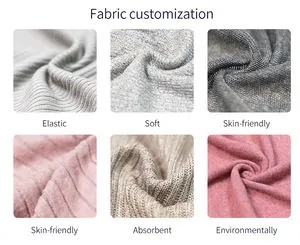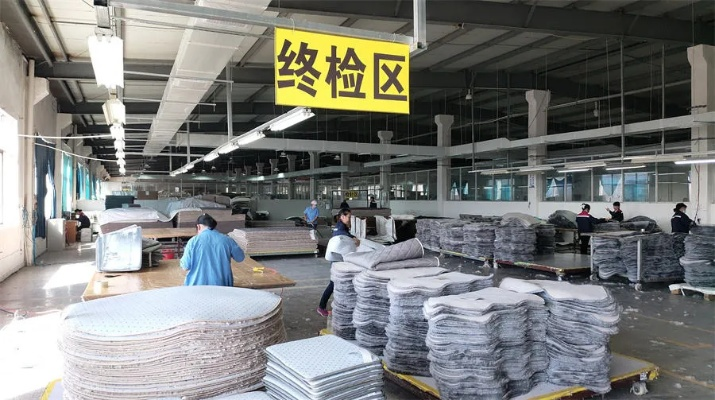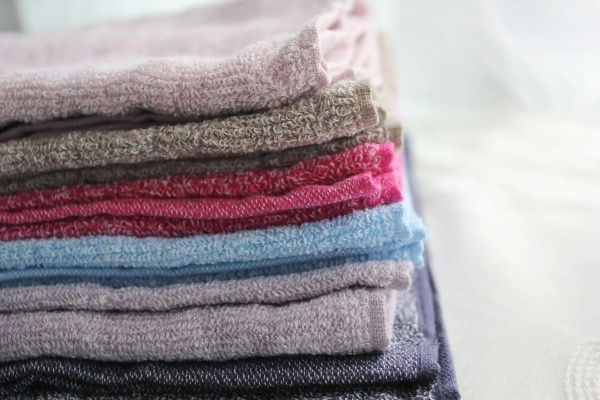The Impact of Factors on the Tensile Performance of Textile Materials
Tensile strength and elongation are two crucial properties for assessing the quality of textile materials. Factors such as fiber type, yarn count, weave pattern, and fabric structure all contribute to the tensile performance of a textile material. For example, natural fibers like cotton and linen have lower tensile strength but higher elongation than synthetic fibers like polyester and nylon. Yarn count refers to the number of threads in one unit length of yarn, and a higher count generally results in stronger and more durable materials. Weave patterns also play a role in the tensile performance, with plain weaves being less durable than twill or satin weaves. Finally, fabric structure, including warp and weft orientation, can affect both the tensile strength and elongation. Overall, understanding the factors that impact textile tensile performance is essential for tailoring materials to specific applications and ensuring their durability and comfort.
Introduction The tensile performance of textile materials is a crucial factor in determining their usability, durability, and overall quality. It refers to how much force a material can withstand before breaking, which is influenced by various factors such as fiber type, yarn structure, weaving pattern, and manufacturing process. In this article, we will explore some of the key factors that affect the tensile performance of textile materials, using an example from the fashion industry to illustrate how these factors can be optimized to enhance the quality and performance of garments.
Factors Affecting Tensile Performance
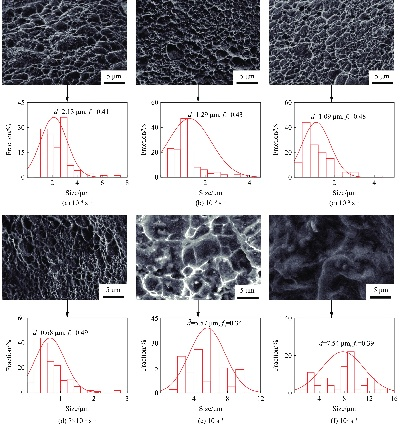
-
Fiber Type Fiber properties such as strength, elasticity, and resilience play a significant role in the tensile performance of textiles. For instance, cotton, which has high elongation at break and low stiffness, tends to have lower tensile strength compared to synthetic fibers like polyester or nylon. This is because synthetic fibers have a more linear molecular structure that allows them to withstand higher stress without breaking.
-
Yarn Structure The arrangement of fibers within the yarn also affects its tensile performance. A loosely spun yarn, known as a "loose-twist" yarn, has more flexibility and stretch than a tightly spun yarn, which is called a "tight-twist." This is because the loosely spun yarn has more space between the fibers, allowing them to absorb more stress without breaking.
-
Weaving Pattern The pattern of weaving, or the way the threads are woven together, plays a role in tensile performance. For example, a plain weave (a simple sequence of parallel lines) may not provide enough support for the fabric, resulting in reduced strength and tear resistance. On the other hand, a satin weave, which involves crossing over each other in a pattern, can provide greater structural integrity and better wear resistance.
-
Manufacturing Process The manufacturing process used to create textile materials also affects their tensile performance. For example, knitting involves interlacing loops of yarn to form a fabric, which results in increased strength and durability compared to woven materials. Additionally, techniques such as reinforcement or coating can also improve the tensile strength and resistance to wear and tear.
Case Study: Optimizing Tensile Performance in the Fashion Industry In the fashion industry, tensile performance is critical for garments that require durability, such as denim jeans or heavy-duty work clothes. To enhance the quality and longevity of these garments, manufacturers must consider the factors mentioned above when selecting fibers, yarn structures, and manufacturing processes.
For example, a manufacturer might choose a blend of cotton and polyester for denim jeans, where polyester provides the necessary strength and elasticity while cotton contributes to breathability and comfort. They could also experiment with different weaving patterns to create a fabric that is both strong and flexible. Additionally, they could incorporate reinforced stitches or a protective coating to further enhance the tensile performance of the garment.
Conclusion Understanding the factors that affect the tensile performance of textile materials is crucial for manufacturers seeking to produce high-quality garments that meet the demands of the fashion industry. By considering fiber type, yarn structure, weaving pattern, and manufacturing process, designers and manufacturers can optimize these factors to achieve the desired level of durability, strength, and comfort for their products.
纺织品拉伸性能是衡量其耐用性和可穿戴性的关键指标,本文将探讨纺织品拉伸性能的影响因素,并通过案例分析进一步说明。
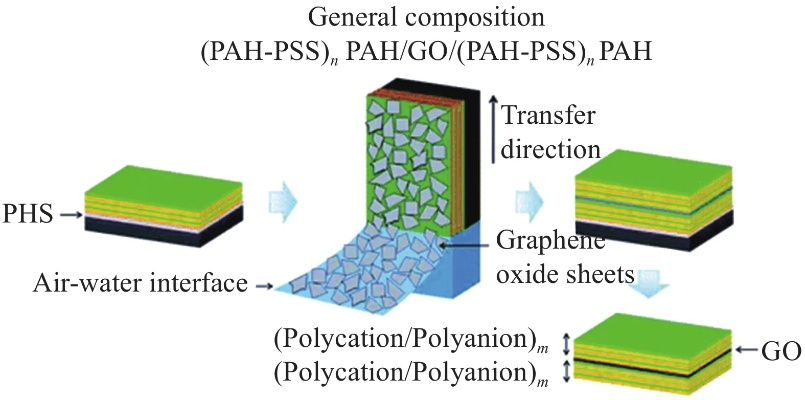
纺织品拉伸性能的影响因素
纤维类型与结构
纤维类型和结构对纺织品拉伸性能有着重要影响,不同类型的纤维具有不同的弹性、延伸性、抗皱性等特性,这些特性决定了纺织品在拉伸过程中的表现,高弹性纤维可以更好地抵抗拉伸应力,而低弹性纤维则更容易产生形变,纤维的结构也会影响其拉伸性能,如纤维的取向、结晶度等都会影响其拉伸强度和延伸率。
纱线密度与织物结构
纱线密度和织物结构也是影响纺织品拉伸性能的重要因素,纱线密度决定了织物的厚度和密度,从而影响其拉伸性能,高密度织物通常具有更好的抗皱性和抗撕裂性,而低密度织物则更适合用于需要高舒适度和轻便性的应用,织物结构也会影响其拉伸性能,如织物的纹理、孔隙率等都会影响其拉伸强度和延伸率。
纺织工艺与设备
纺织工艺和设备也是影响纺织品拉伸性能的重要因素,纺织工艺中的拉力控制、张力控制、退火处理等都会对纺织品拉伸性能产生影响,先进的纺织工艺可以提高纤维的利用率和织物的质量,从而提高纺织品的拉伸性能,设备的质量和精度也会影响纺织品的加工质量和性能。
环境因素
环境因素也是影响纺织品拉伸性能的重要因素,温度、湿度、压力等环境因素都会对纺织品的拉伸性能产生影响,高温会使纤维收缩,导致纺织品在拉伸过程中产生更多的形变;湿度过高或过低都会影响纺织品的稳定性和加工质量。
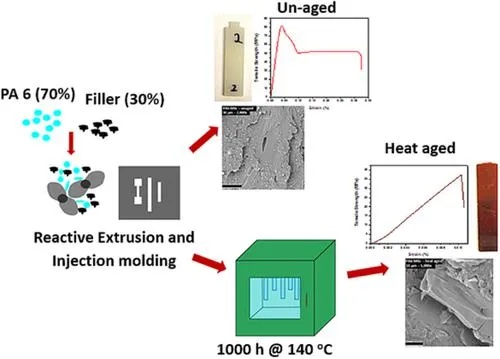
案例分析
以纺织品为例,说明不同类型纤维、不同纱线密度与织物结构对纺织品拉伸性能的影响。
某品牌的高弹性涤纶纤维纺织品
该品牌的高弹性涤纶纤维纺织品采用了高密度织物结构,具有很好的抗皱性和抗撕裂性,该产品的成功得益于其采用的高弹性纤维和合理的纱线密度以及织物结构设计,该品牌的纺织工艺也十分精湛,能够精确控制拉力,从而保证了产品的优良拉伸性能。
某新型环保纤维纺织品
该新型环保纤维纺织品采用了环保材料和先进的纺织工艺,具有很好的抗皱性和透气性,该产品的成功也与其采用的新型纤维材料和先进的纺织工艺有关,该产品的纱线密度和织物结构设计也十分合理,能够满足不同用户的需求。
纺织品拉伸性能是衡量其耐用性和可穿戴性的重要指标,通过分析影响纺织品拉伸性能的因素,我们可以更好地了解如何提高纺织品的拉伸性能,通过案例分析,我们可以更好地理解不同类型纤维、不同纱线密度与织物结构对纺织品拉伸性能的影响,在纺织品的生产过程中,我们应该注重纤维的选择、纱线密度的控制、织物结构的优化以及纺织工艺的改进,从而提高纺织品的拉伸性能,满足不同用户的需求。
Articles related to the knowledge points of this article:
The Story of Sea Lizards Textiles:A Multidisciplinary Exploration
Suzhou Green Textiles Budget Tender Strategy
Breaking Barriers and Unleashing Potential at the Frankfurt Textile Expo
